Trying to figure out which Azores Island is the best to visit? This Azores travel guide will help you decide where to go based on your interests and travel style. We’ll break down the best islands to visit in the Azores, what makes each one unique, who they’re best suited for, and what to expect.
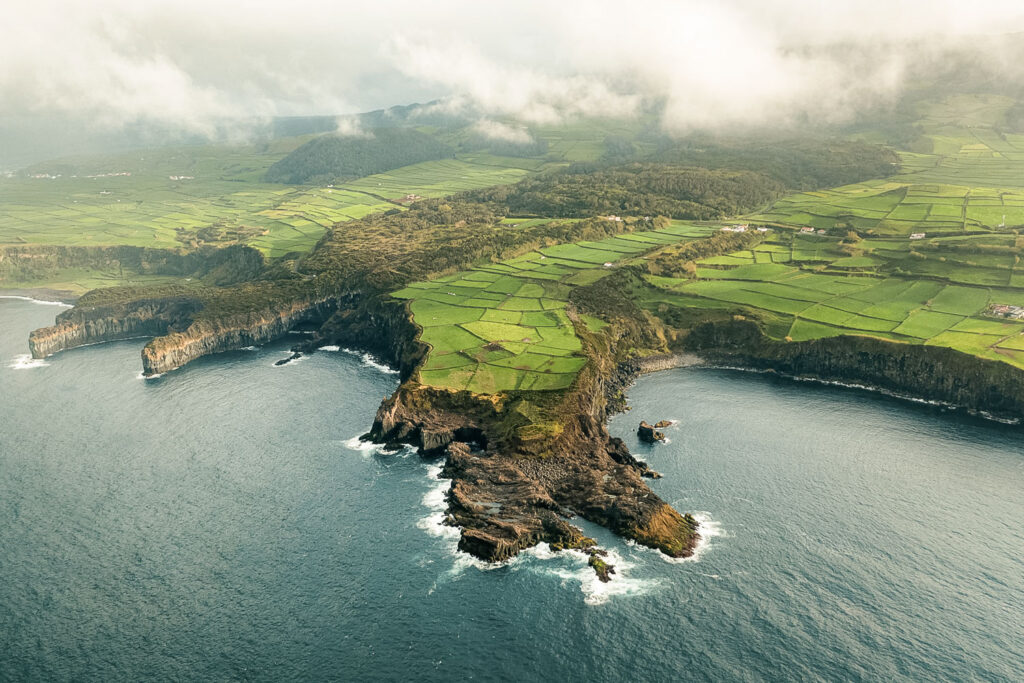
If you’ve never heard of the Azores (don’t worry, you’re not alone), get ready to feel ahead of the curve. This Portuguese archipelago floating in the middle of the Atlantic is like if Iceland, Hawaii, and Ireland had a gorgeous volcanic baby. With nine different islands to choose from, it’s easy to feel overwhelmed, especially if it’s your first time planning a trip to the Azores. Let’s get into it.
Heads up! This post may contain affiliate links, which means I might earn a small commission if you book or buy something through them, at no extra cost to you. I only recommend things I genuinely love or would use myself. Thanks for helping support the blog!
Wait… Where Are the Azores?
The Azores (or “Açores” in Portuguese) are a group of nine volcanic islands in the middle of the North Atlantic Ocean. Politically, they’re part of Portugal, but geographically? They’re doing their own thing: lush green cliffs, crater lakes, hot springs, black sand beaches, and cows outnumbering people.
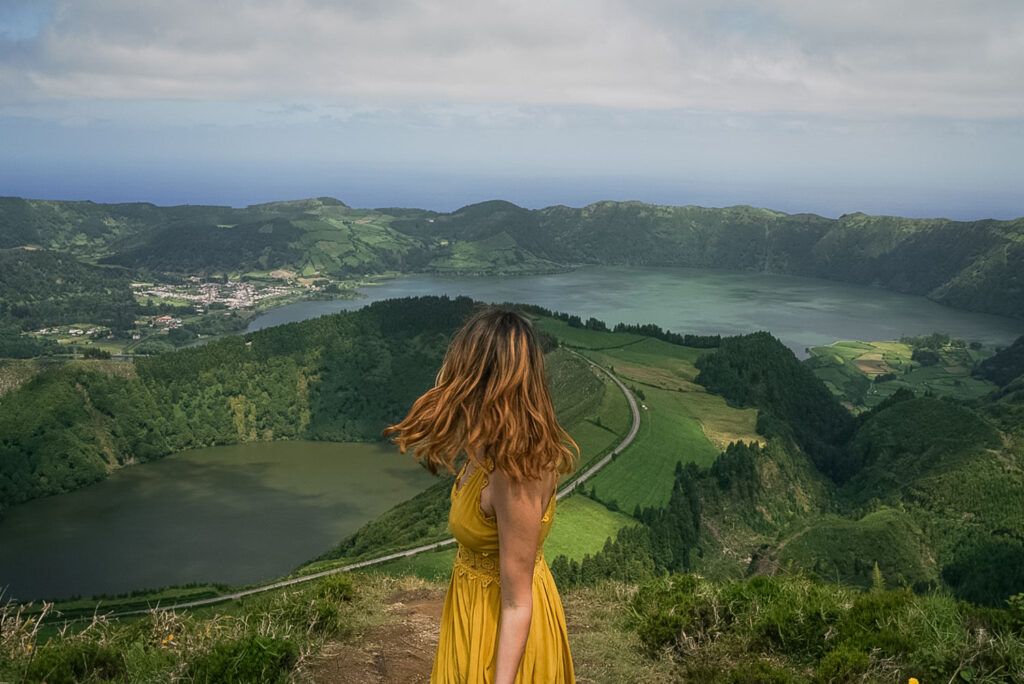
Getting to and around the azores: Airports, Ferries, and Island Hopping Tips
How far are the Azores from Portugal?
Let’s start with the basics. The Azores are a part of Portugal, but they’re not just a quick hop from Lisbon. The Azores are about 930 miles west of mainland Portugal. By plane, it takes roughly 2 to 2.5 hours to fly from Lisbon to São Miguel, the main island.
Flying to the Azores from Abroad
Most international travelers fly into Ponta Delgada (PDL) on São Miguel, the largest and most connected island. It’s the main hub for Azores airports, and your best bet if you’re flying from North America. In high season (roughly May to September), there are direct flights to Ponta Delgada from Bston, New York, and Toronto.
If you’re already in Europe, getting to the Azores is even easier. Lisbon and Porto both offer multiple daily flights to São Miguel and other islands. TAP, SATA, and Ryanair all operate routes. São Miguel has the most connections, so it’s the go-to starting point for most visitors.


How to Travel Between Islands in the Azores
The Azores nine islands are spread out across hundreds of miles, so getting between the islands isn’t as simple as hopping on a bus. You have two main options for Azores island hopping: flights and ferries.
Flights Between Islands
For longer distance or less-connected islands, you’ll need to fly. SATA Air runs regular inter-island flights between all nine islands. São Miguel and Terceira are the two main Azores airports for connecting flights. These are short flights, usually between 30 and 50 minutes, and the only realistic way to reach remote islands like Flores or Corvo.
That said, routes aren’t always direct. For example, going from São Jorge to Santa Maria might mean a connection in São Miguel or Terceira. And while SATA is reliable, weather in the Azores is famously unpredictable. Fog, wind, and low visibility can delay or cancel flights. So build buffer time into your schedule, especially before international connections.
Azores Ferries
In the central group of islands (Faial, Pico, and São Jorge) you can skip the flights and take Azores ferries instead. Operated by Atlânticoline, these ferries are cheap, scenic, and great for short hops (some take as little as 30 minutes). You can even base yourself on one island and day trip by ferry to the others.
Note that ferry schedules vary by season. In summer, service is frequent and reliable. In winter, many routes reduce or pause entirely.
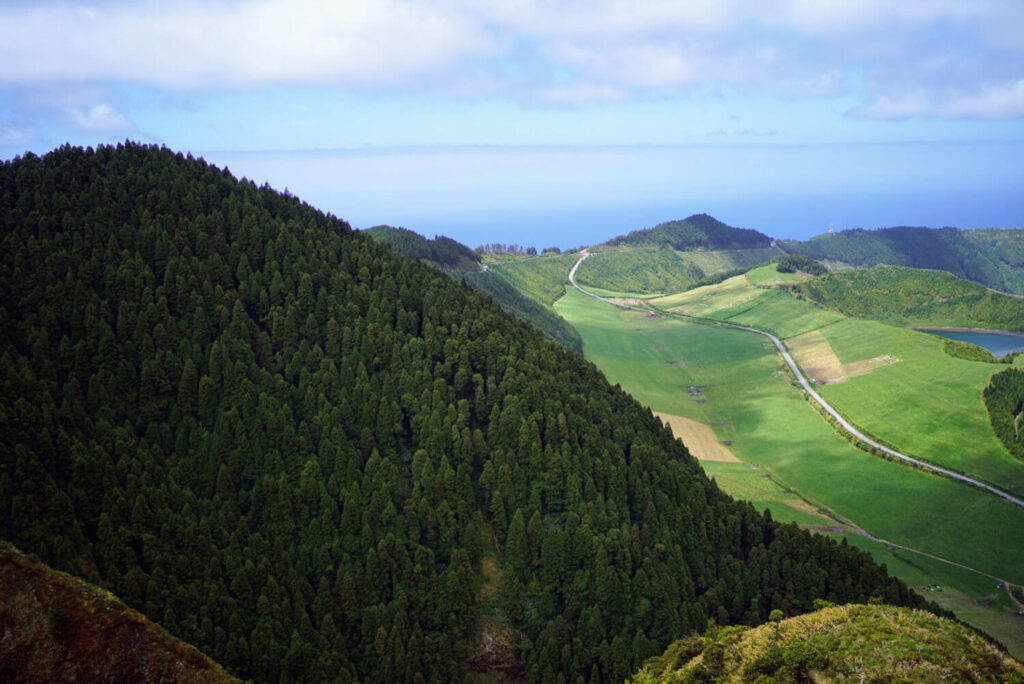
The Nine Azores Islands: Which ARE THE BEST TO VISIT and Why
What are the nine islands of the Azores? Each island has its own vibe, scenery, highlights, and quirks. Here’s a quick, complete list of the Azores Islands before we do a deeper dive:
- São Miguel – The Big One
- Terceira – The Cultural One
- Pico – The Dramatic One (it has a volcano)
- Faial – The Sailor’s Island
- São Jorge – The Skinny One with Cheese
- Graciosa – The Quiet One
- Flores – The Wild One
- Corvo – The Tiny One
- Santa Maria – The Sunny One
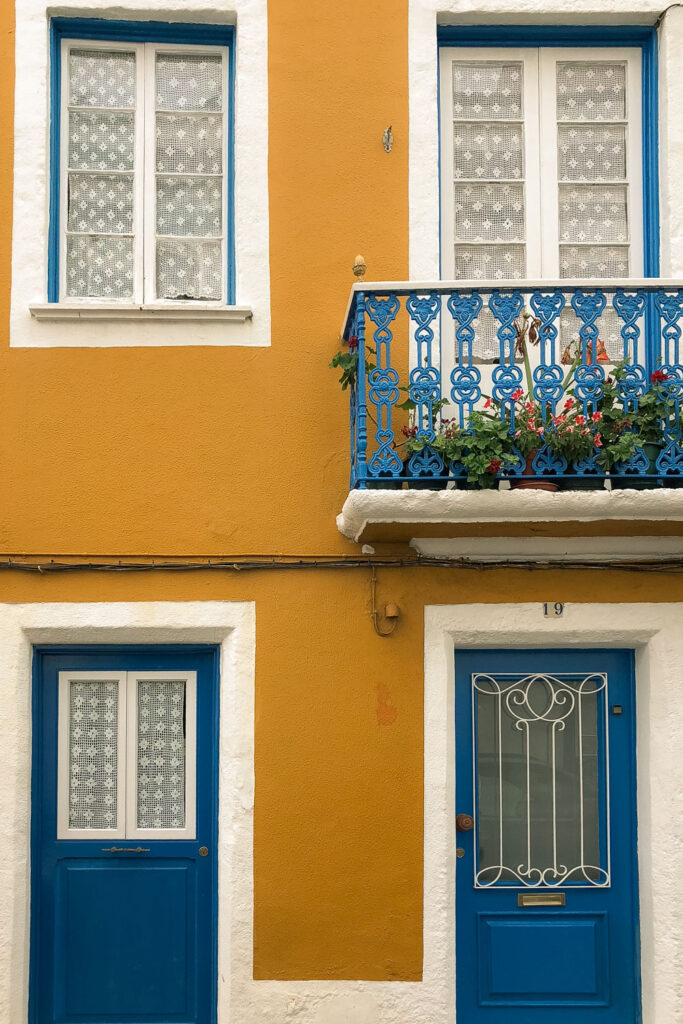
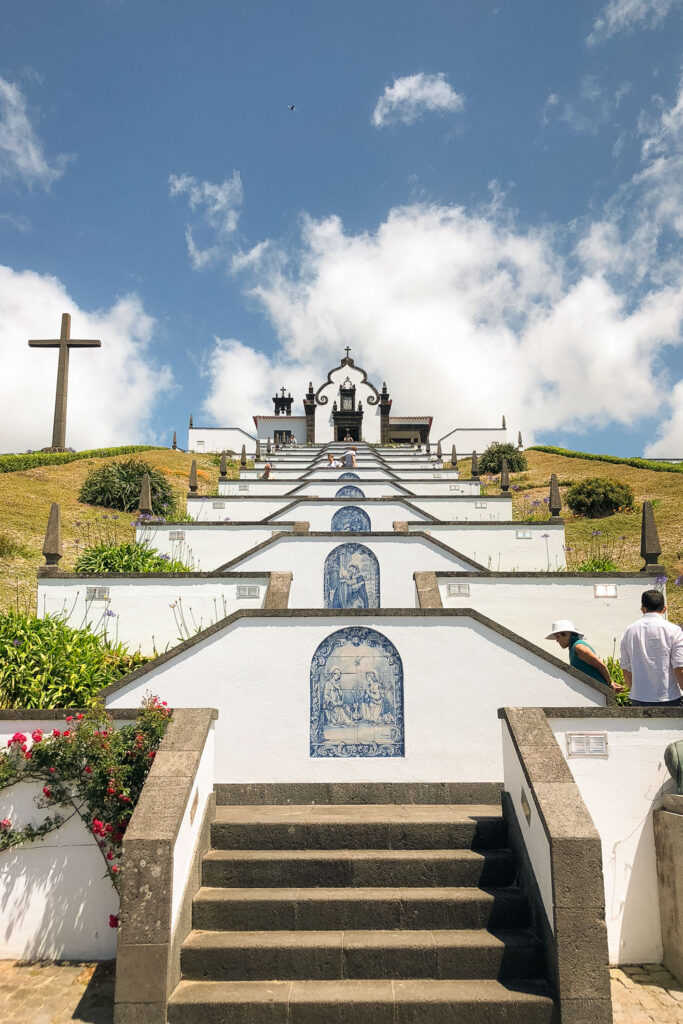
São Miguel – The Big One (a.k.a. where you’ll probably fly into)
Best for: First-timers, foodies, hikers, hot spring lovers, road trippers.
São Miguel is nicknamed “The Green Island” for its rolling hills and lush, dramatic, and volcanic landscapes. Of the nine islands, São Miguel is the most populated. It’s also the easiest to explore if you’ve got limited time—the island everyone meets first and falls a little in love with. First-timers tend to base themselves here for good reason: it’s the largest island, the easiest to get to, and the most developed for tourism.
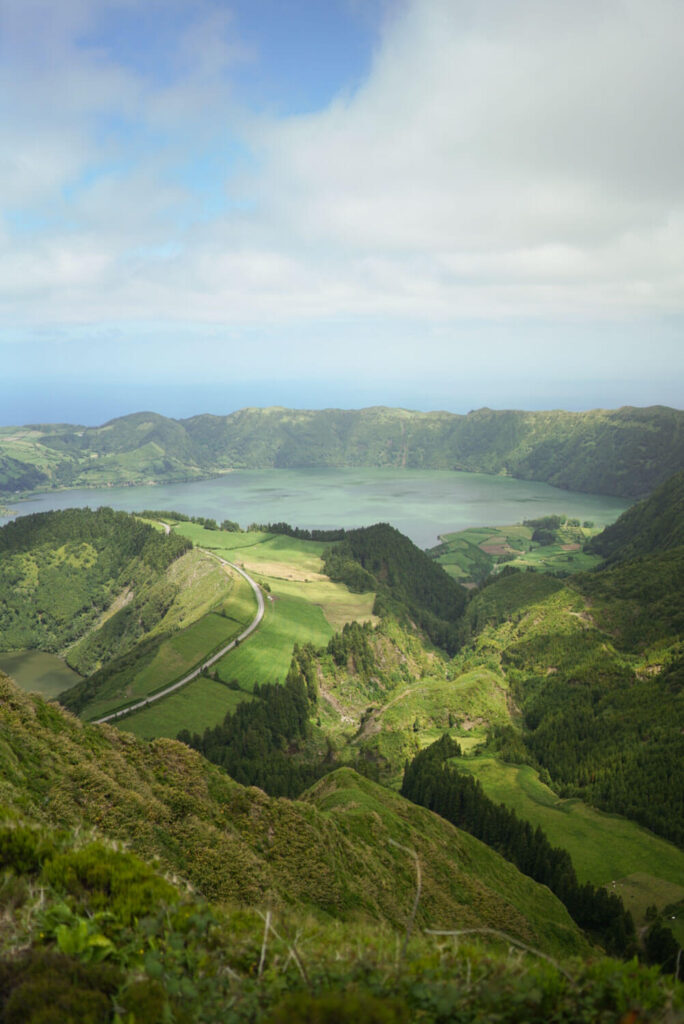
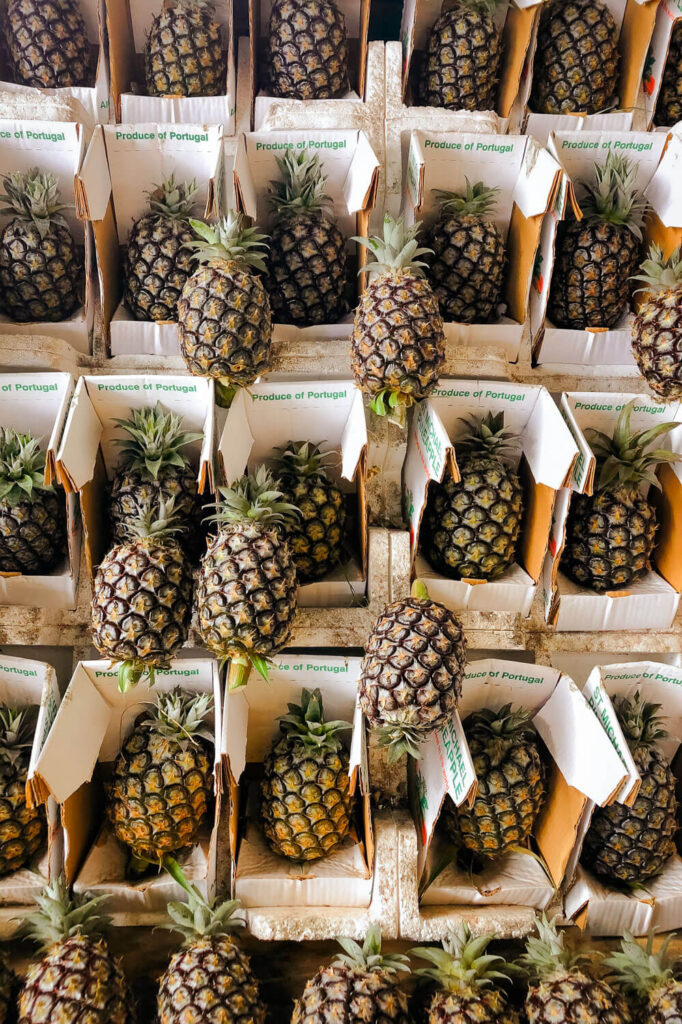
São Miguel Highlights:
- Sete Cidades: Twin crater lakes separated by a narrow bridge—one blue, one green (yep, real life).
- Furnas: A geothermal town where you can eat cozido (a stew slow-cooked in volcanic steam), soak in hot springs, and drink iron-rich spring water that tastes vaguely like nickels.
- Lagoa do Fogo: A jaw-dropping crater lake that feels like a secret even though it’s not.
- Tea plantations and pineapple farms: Because the Azores grow tea and pineapples like it’s NBD.
Fun Fact: São Miguel is home to the only tea plantations in Europe.
Terceira – The Cultural One
Best for: History buffs, architecture lovers, people who enjoy spontaneous parades and bullfighting (but the kind where the bull doesn’t die).
Terceira seamlessly blends history, culture, and rugged natural beauty. The island’s capital, Angra do Heroísmo, is a UNESCO World Heritage site full of colonial architecture and cobblestone streets. Terceira has a strong cultural identity that plays out in village festivals, traditional bull-running events (touradas à corda), and a pace of life that feels rooted and real.
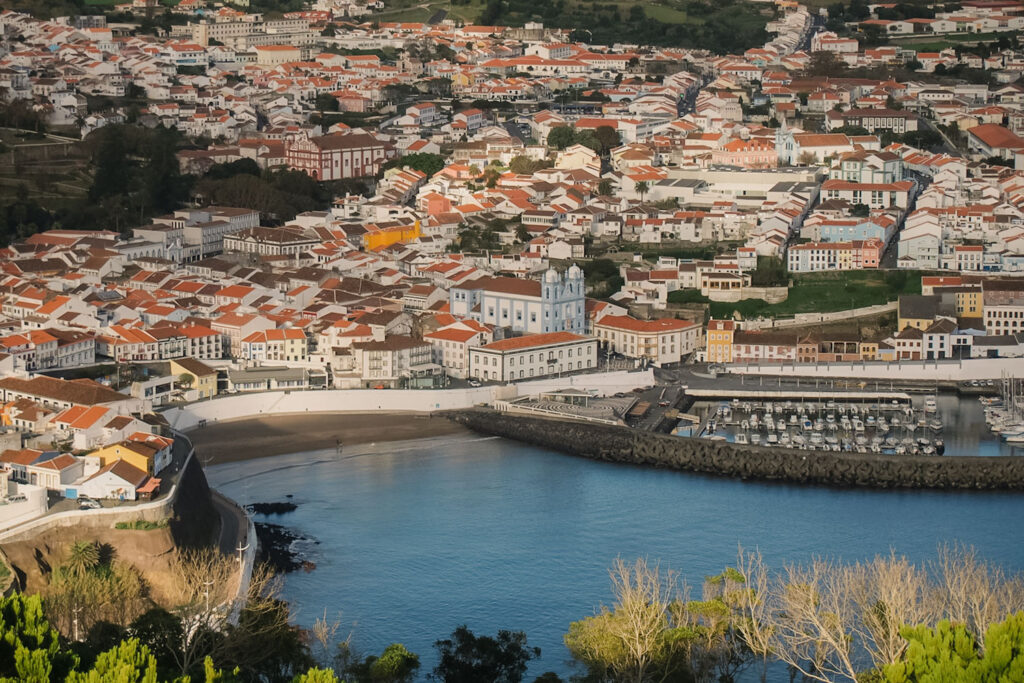
Terceira Highlights:
- Algar do Carvão: A volcanic chimney you can walk into. Sounds terrifying, but it’s stunning.
- Piscinas Naturais Biscoitos: Natural lava rock pools for swimming.
Cultural Note: “Tourada à corda” is a very Azorean form of bull-running in which the bull is literally on a rope and chased around the streets by locals. It’s weirdly festive.
Pico – The Dramatic One (it has a volcano)
Best for: Adventure seekers, wine lovers, mountain climbers, introverts.
Pico is dominated by Mount Pico, Portugal’s highest peak. It’s also home to UNESCO-designated vineyards growing out of lava rocks—impressive. The landscape is all dark lava rock; it’s wild. The island is also a hotspot for whale watching, with deep waters that attract various species of whales and dolphins.
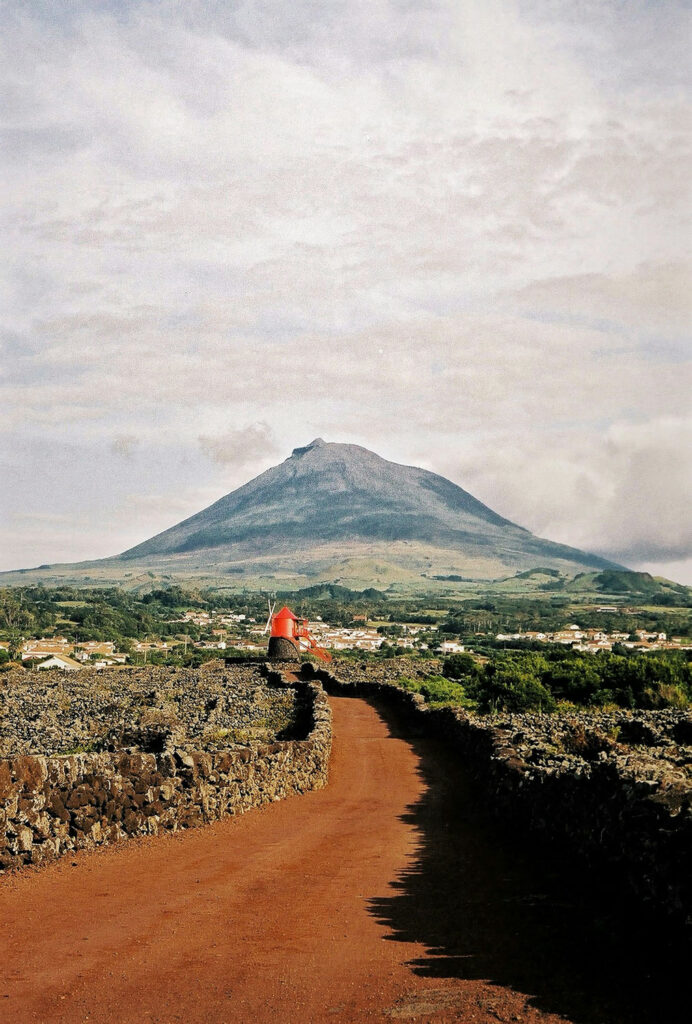
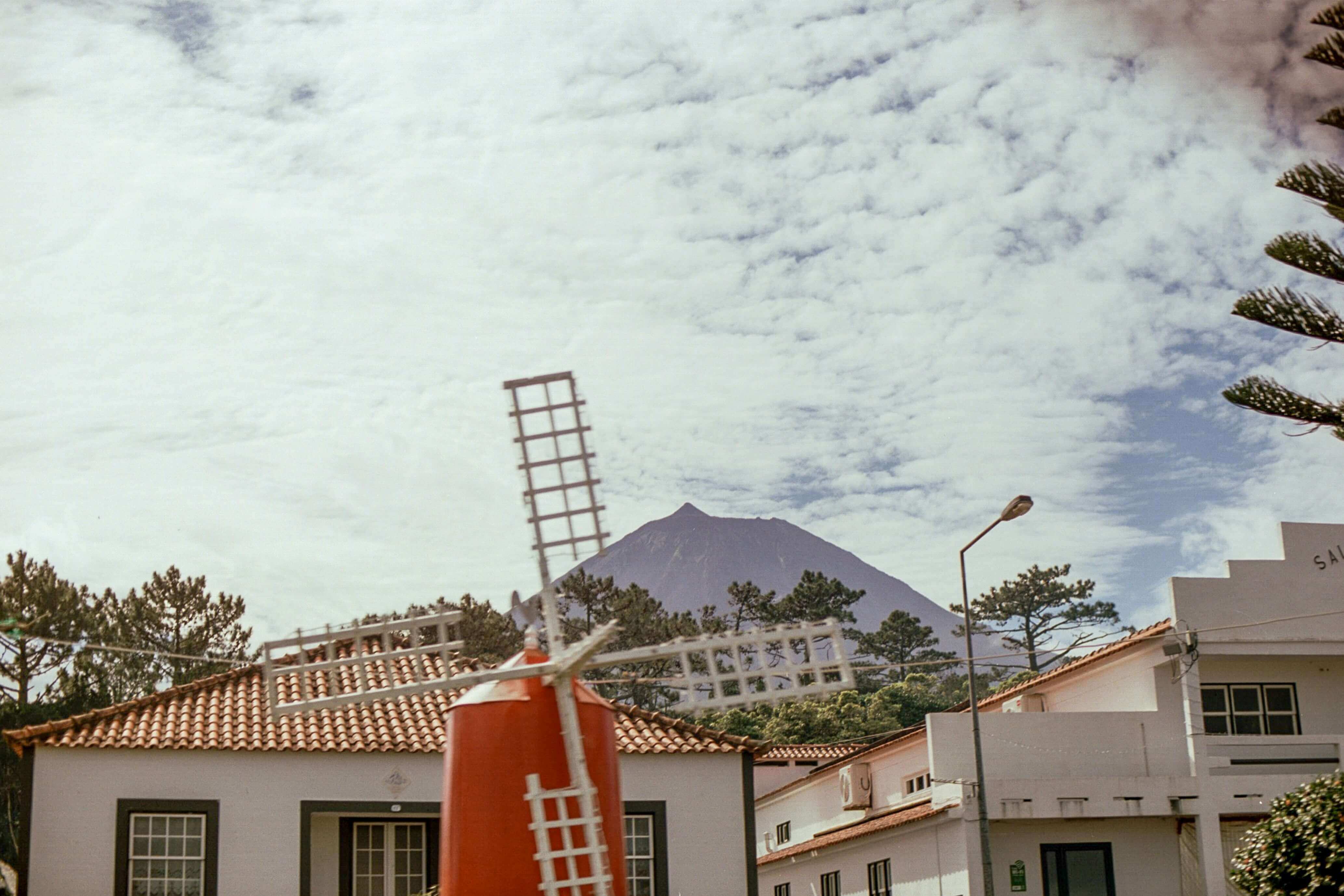
Pico Highlights:
- Climb Mount Pico (or admire it from below if you like your knees intact).
- Wine tasting in lava rock vineyards (the wine is mineral-y and strong).
- Whale watching (Pico is one of the best places in the world to do it).
Traveler Tip: Pack layers even if you’re not hiking the volcano. The weather here changes faster than your phone’s battery when using GPS.
Faial – The Sailor’s Island
Best for: Nautical vibes, history nerds, people who like volcanoes without having to climb them.
If you love a nautical aesthetic, Faial is your jam. It’s known as the “Blue Island” for the hydrangeas that cover the landscape in summer. Faial has long been a stopover for sailors crossing the Atlantic. The marina in Horta, the main town, is covered in colorful paintings left behind by passing crews. Beyond the marina, Faial’s highlights are volcanic: the Caldeira, a massive crater at the island’s center, and Caphelinhos, an eerie landscape where a 1957 eruption formed new land. Fun fact: the eruption of this volcano brought my family to the United States.
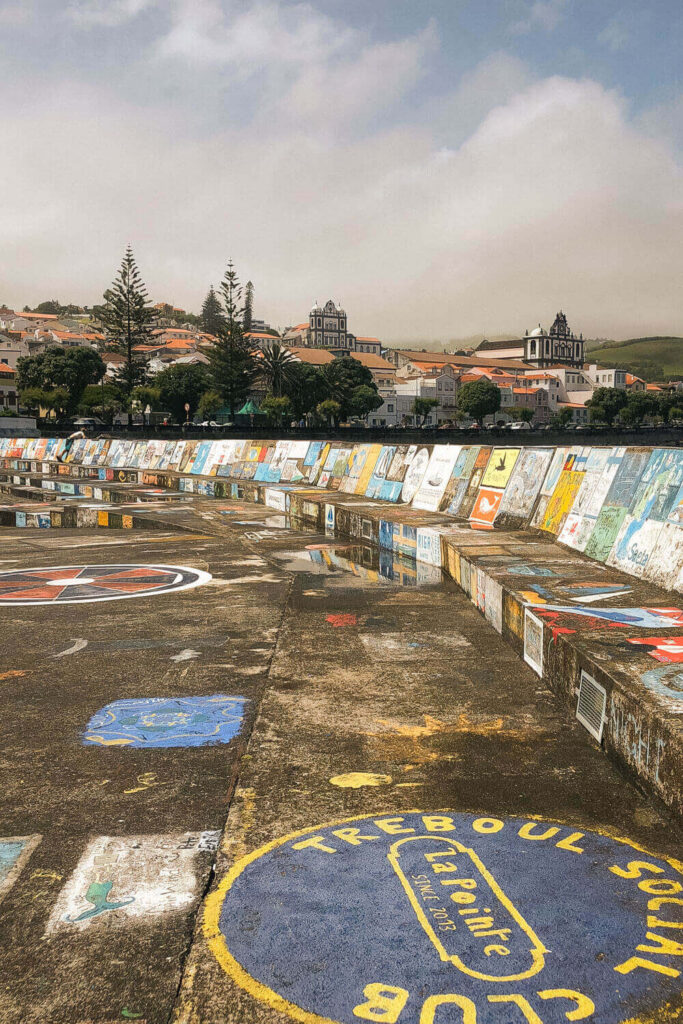
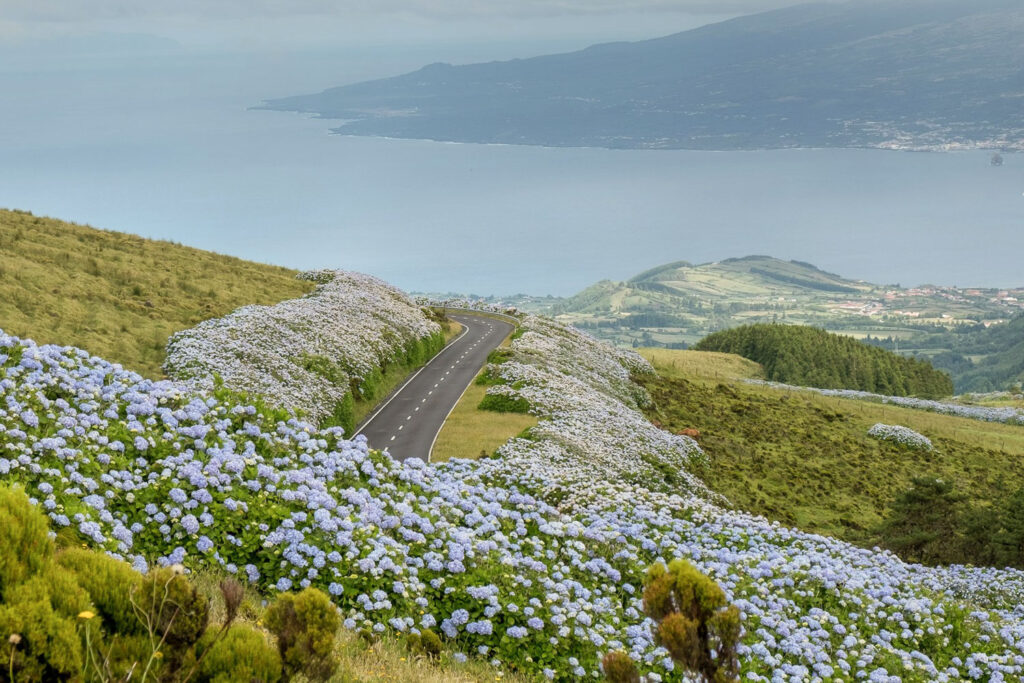
Faial Highlights:
- Capelinhos Volcano: A surreal, ash-covered landscape that looks like Mars. With a lighthouse. And an underground museum.
- Horta Marina: Check out the murals painted by visiting sailors—leaving your mark before crossing the ocean is a tradition.
Fun Fact: Faial is part of the “Triangle Islands” along with Pico and São Jorge. You can easily hop between them by ferry.
São Jorge – The Skinny One (and the one with cheese)
Best for: Hikers, cheese lovers, those who like their islands long and mysterious.
São Jorge is a narrow, ridge-like island with dramatic cliffs, hidden “fajãs” (flat coastal areas formed by lava or landslides), and some of the best hiking in the Azores. You won’t find big cities or resort crowds here, just quiet villages, dramatic coastlines, and a lot of cows. Speaking of cows, São Jorge is famous for its cheese, so don’t miss it.
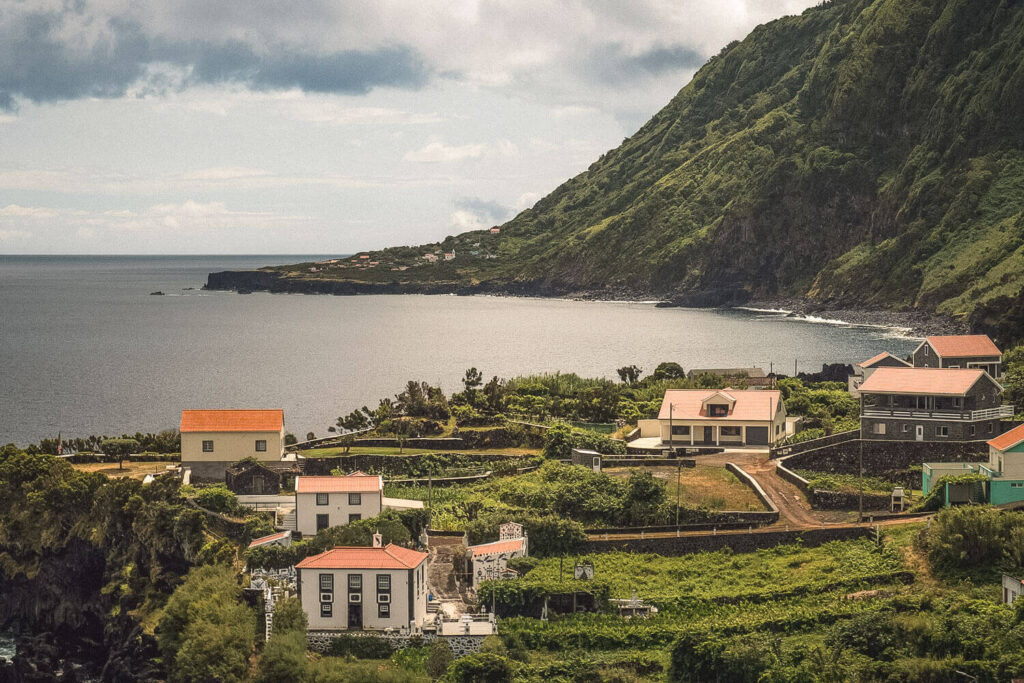
São Jorge Highlights:
- Fajã da Caldeira de Santo Cristo: A remote, surfy fajã that feels like the end of the world.
- Queijo São Jorge: A tangy cow’s milk cheese that locals are very proud of (rightfully so). The true cheese lovers can take a cheese tour!!!
Traveler Tip: Some fajãs are only accessible on foot or by quad bike, so plan accordingly (i.e., wear shoes that aren’t flip-flops), or make it easy on yourself and join a guided tour.
Graciosa – The Quiet One
Best for: Off-the-grid explorers, slow travelers.
Graciosa means “graceful,” and it lives up to its name with peaceful countryside, windmills, and natural caves. The island is small, low-key, and often overlooked. Graciosa is a great choice for travelers seeking peace, simplicity, and a feel for the Azores before tourism.
Graciosa Highlights:
- Furna do Enxofre: A sulfur cave with an underground lake that smells as wild as it sounds.
- Red-roofed windmills straight out of a fairytale.
Fun Fact: This island has fewer than 5,000 people. Cows may outnumber them.
Flores – The Wild One
Best for: Nature lovers, waterfall chasers, photographers, people who like dramatic coastlines, and those who like zero crowds.
Flores is jaw-droppingly beautiful. It is the westernmost island in the Azores and one of the most remote. The island has a small population and limited infrastructure, so while services are basic, the natural beauty is impressive and largely untouched. Flores is best suited for experienced hikers, nature lovers, and those looking for quiet, off-the-grid experiences.

Flores Highlights:
- Poço da Ribeira do Ferreiro: A lush, fairytale-like wall of waterfalls.
- Fajã Grande: One of the westernmost villages in Europe, with epic sunsets.
Traveler Tip: It’s remote AF. Pack snacks. Consider joining a guided Flores day tour so you don’t miss anything. This island is magic.
Corvo – The Tiny One
Best for: Completionists, bird watchers, introverts on vacation from other introverts.
Corvo is the smallest and most remote island. It has one village. That’s it. And the one village, Vila do Corvo, has fewer than 400 residents. Life here is quiet and deeply traditional. Flights and ferries are weather-dependent, and there is little in the way of tourist infrastructure. Corvo is less about checking off sights and more about experiencing a way of life that hasn’t changed much in decades. It’s ideal for travelers who are self-sufficient and curious about remote, off-the-beaten-path destinations.
Corvo Highlights:
- Caldeirão: A massive volcanic crater you can hike around (bring a rain jacket and possibly a sense of existential awe).
Fun Fact: If you’ve made it to Corvo, you’ve officially “done” the Azores. Congratulations, you’re in the 1% of travelers.
Santa Maria – The Sunny One
Best for: Beach lovers, sun seekers, and people who pretend it’s summer even when it’s not.
Santa Maria is the sunniest and driest island in the Azores, with a warmer climate and sandier beaches. It has a more Mediterranean feel than its volcanic siblings. Geographically, Santa Maria is the southernmost of the Azores Islands and was the first to be discovered by the Portuguese.
Santa Maria Highlights:
- Praia Formosa: One of the few white-sand beaches in the Azores.
- Barreiro da Faneca: A red desert-like landscape that feels like you’re on Mars again, but in summer.
Fun Fact: Christopher Columbus stopped here on his way back from the Americas. No big deal.
When’s the Best Time to Visit The Azores?
The Azores are mild year-round thanks to the Atlantic, but there are some seasonal considerations:
- Summer (June–August): Best weather, warmest temps (mid-70s°F), festivals galore, whale watching in full swing. Also, the busiest time.
- Spring (April–May): There are wildflowers everywhere, green hills are super lush, and there are fewer tourists. There is still some rain, but it is manageable.
- Fall (September–October): Great for hiking and shoulder-season deals. The weather is still pleasant.
- Winter (November–March): It is the rainiest and windiest season. It is not ideal unless you’re into storm watching or extreme solitude.
Pro Tip: Always pack a rain jacket, no matter when you go. The weather changes about 47 times a day. Locals joke you can experience all four seasons in one morning—and they’re not wrong.

Cultural Norms + Things You Might Find Surprising
- Meals are slow: Azoreans don’t rush meals. Dining is an experience, not a checkbox. Relax and don’t expect to receive your check until you ask for it.
- Tipping: Not expected, like in the U.S. Consider rounding up or leaving a euro or two for great service.
- English is widely spoken, but a little Portuguese goes a long way. Learn “Obrigado/a” (thank you).
- Everything is fresher than fresh: The fish was probably caught an hour ago. Cheese was perhaps made this morning—eggs from that chicken over there.
- Cows have the right of way: Seriously.
- Shops may close for lunch: Like a lot of Europe, there’s a midday break (especially in small towns). Plan accordingly.
- They love their festivals: Each island has its own calendar of religious, cultural, and music festivals. You might stumble into one unexpectedly (and you should stay for the food).
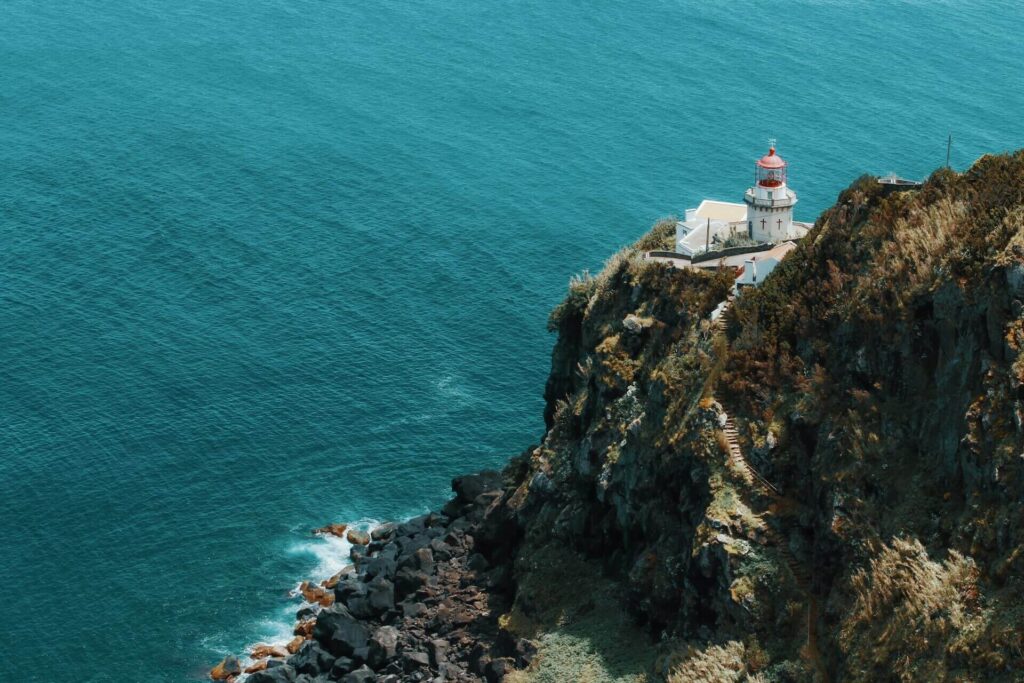
Practical Tips for First-Time Visitors
- Getting There: SATA/Azores Airlines offers direct flights from Lisbon, Porto, Boston, New York (JFK), and Toronto to São Miguel and Terceira.
- Getting Around: Rent a car. No, seriously, rent a car. Public transport exists, but it’s limited. Ferries and small planes connect the islands.
- Currency: Euro (€). Credit cards are widely accepted, but carry cash for small towns or mom-and-pop spots.
- Connectivity: Wi-Fi is decent. SIM cards are cheap if you need data.
- Time Zone: Azores Time (AZOT) is 4 hours ahead of Eastern Time (ET).
- Food to try: Cozido das Furnas (volcano stew), lapas (grilled limpets), fresh tuna, queijo São Jorge, and local wines.
- What to pack: Layers, waterproof everything, hiking shoes, swimsuit.